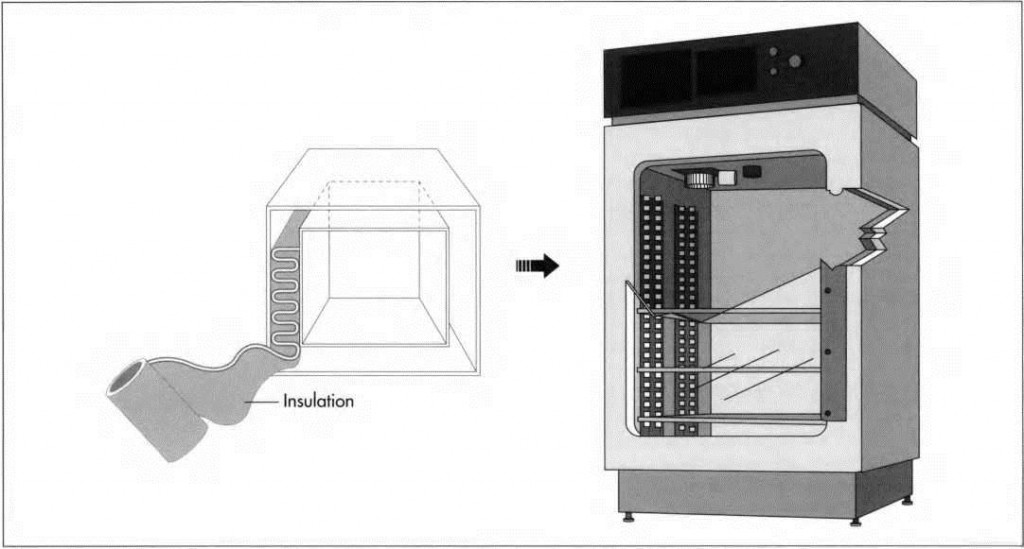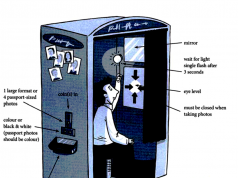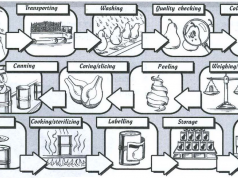
An incubator comprises a transparent chamber and the equipment that regulates its temperature, humidity, and ventilation. For years, the principle uses for the controlled environment provided by incubators included hatching poultry eggs and caring for premature or sick infants, but a new and important application has recently emerged, namely, the cultivation and manipulation of microorganisms for medical treatment and research. This article will focus on laboratory (medical) incubators.
The first incubators were used in ancient China and Egypt, where they consisted of fire-heated rooms in which fertilized chicken eggs were placed to hatch, thereby freeing the hens to continue laying eggs. Later, wood stoves and alcohol lamps were used to heat incubators. Today, poultry incubators are large rooms, electrically heated to maintain temperatures between 99.5 and 100 degrees Fahrenheit (37.5 and 37.8 degrees Celsius). Fans are used to circulate the heated air evenly over the eggs, and the room’s humidity is set at about 60 percent to minimize the evaporation of water from the eggs. In addition, outside air is pumped into the incubator to maintain a constant oxygen level of 21 percent, which is normal for fresh air. As many as 100,000 eggs may be nurtured in a large commercial incubator at one time, and all are rotated a minimum of 8 times a day throughout the 21-day incubation period.
During the late nineteenth century, physicians began to use incubators to help save the lives of babies bom after a gestation period of less than 37 weeks (an optimal human pregnancy lasts 280 days, or 40 weeks). The first infant incubator, heated by kerosene lamps, appeared in 1884 at a Paris women’s hospital.
In 1933, American Julius H. Hess designed an electrically heated infant incubator (most are still electrically heated today). Modem baby incubators resemble cribs, save that they are enclosed. Usually, the covers are transparent so that medical personnel can observe babies continually. In addition, many incubators are made with side wall apertures into which long-armed rubber gloves can be fitted, enabling nurses to care for the babies without removing them. The temperature is usually maintained at between 88 and 90 degrees Fahrenheit (31 to 32 degrees Celsius). Entering air is passed through a HEPA (high efficiency purified air) filter, which cleans and humidifies it, and the oxygen level within the chamber is adjusted to meet the particular needs of each infant. Incubators in neonatal units, centers that specialize in caring for premature infants, are frequently equipped with electronic devices for monitoring the infant’s temperature and the amount of oxygen in its blood.
Laboratory (medical) incubators were first utilized during the twentieth century, when doctors realized that they could be could be used to identify pathogens (disease-causing bacteria) in patients’ bodily fluids and thus diagnose their disorders more accurately. After a sample has been obtained, it is transferred to a Petri dish, flask, or some other sterile container and placed in a rack inside the incubator. To promote pathogenic growth, the air inside the chamber is humidified and heated to body temperature (98.6 degrees Fahrenheit or 37 degrees Celsius). In addition, these incubators provide the amount of atmospheric carbon dioxide or nitrogen necessary for the cell’s growth. As this carefully conditioned air circulates around it, the microorganism multiplies, enabling easier and more certain identification
Laboratory Incubator
A related use of incubators is tissue culture, a research technique in which clinicians extract tissue fragments from plants or animals, place these explants in an incubator, and monitor their subsequent growth. The temperature within the incubator is maintained at or near that of the organism from which the explant was derived. Observing explants in incubators gives scientists insight into the operation and interaction of particular cells; for example, it has enabled them to understand cancerous cells and to develop vaccines for polio, influenza, measles, and mumps. In addition, tissue culture has allowed researchers to detect disorders stemming from the lack of particular enzymes.
Incubators are also used in genetic engineering, an extension of tissue culturing in which scientists manipulate the genetic materials in explants, sometimes combining DNA from discrete sources to create new organisms. While such applications as sperm banks, cloning, and eugenics trouble many contemporary observers, genetic material has already been manipulated to measurable positive effect—to make insulin and other biologically essential proteins, for example. Genetic engineering can also improve the nutritional content of many fruits and vegetables and can increase the resistance of various crops to disease. It is in the field of bio-technology that incubators’ greatest potential lies.
Raw Materials
Three main types of materials are necessary to manufacture an incubator. The first is stainless steel sheet metal of a common grade, usually .02 to .04 inch (.05 to .1 centimeter) thick. Stainless steel is used because it resists rust and corrosion that might be caused by both naturally occurring environmental agents and by whatever is placed inside the unit. The next category of necessary components includes items purchased from outside suppliers: nuts, screws, insulation, motors, fans, and other miscellaneous items. The third type of necessary material is the electronics package, whose complexity will depend upon the sophistication of the unit in question. Such a package may have simple on/off switches with analog temperature control or a state-of-the-art microprocessor that can be programmed to maintain different temperatures for varying intervals, or to operate various internal light systems.
Design
Like standard refrigerators, incubators are measured in terms of the chamber’s volume, which ranges from 5 to 10 cubic feet (1.5 to 3 cubic meters) for countertop models and from 18 to 33 cubic feet (5.5 to 10 cubic meters) for free-standing models.
The sheet metal is used to make two box con-figurations, an inner chamber and the case that encloses it. Insulation (if the chamber is heated electrically) or a water-jacket (if it is water-heated) surrounds the chamber, and the case supports it, the controls, and the doors. To prevent contamination and avoid fungal or bacterial growth, the chamber must be hermetically sealed, or rendered airtight, as must any apertures built into its walls. A glass door that allows scientists to observe the chamber’s contents without disturbing them fits against the chamber’s gasket, which helps to keep the incubator airtight. A steel door, solid and insulated, closes over the glass door.
Two types of heat sources are used: electrical heaters that use fans to circulate the warmth they generate, and hot water jackets. In the former design, the inner chamber has an electrical heater mounted on an inside wall and covered by a perforated protective panel. Mounted in the chamber wall just above the heater is a fan whose motor extends through the chamber wall into the control area of the case and whose blades face inward. Other manufacturers heat the chamber by surrounding it with a water-filled jacket.
The dry-wall heater offer several advantages over the water-jacket. First, the former can change temperature within the chamber more quickly. Also, electrically heated units can be thermally decontaminated because the wall heaters not only warm the chamber more quickly but also heat it to higher temperatures (a unit is considered contaminant-free after its chamber temperature has been raised to 212 degrees Fahrenheit or 100 degrees Celsius or above). Water jackets pose another problem wall heaters don’t: because they are pressurized, they can develop leaks.
Humidity is generated by heating a small copper bowl that contains limited amounts of purified water; the resulting steam can be introduced into the chamber by means of a control valve. Interior lighting may also be used. Fluorescent and UV (ultra-violet) lamps can be installed separately or in combination. To adjust temperature, humidity, lights, ventilation, and any other special features, more sophisticated incubators feature control panels on their outer case. However, if the unit is a relatively simple one, it will provide only basic on/off switches with simple analog temperature controls. Inside the chamber, a thermostat or thermocouple is strategically placed so that it can be viewed without difficulty from the outside.
(The largest components in a laboratory incubator are made of stainless steel sheet metal that is sheared, perforated, and bent to the proper shape. The pieces are joined together by screws, spot welding, or arc welding. Near the end of the assembly process, either a water jacket or insulation is inserted into the chamber.)
The Manufacturing Process
Cutting, perforating, and bending the sheet metal
1 First, 48 inch by 112 inch (122 centimeter by 284 centimeter) sheets of metal are cut into small, square pieces with a flat shear that resembles a very large, table top paper cutter.
2 A CNC Turret Press is a machine programmed with the dimensions of the sheet metal to be perforated and the location of each hole and notch; the shapes and sizes of each hole and notch also are entered. The machine has a magazine of punches in varying sizes and predetermined locations in a turret (rotary) holder. An operator places a sheet on the machine bed (table), positions it against three fixed points to insure squareness, and clamps it to the table. The machine will then move the sheet steel over a bed of rollers to different positions under the turret before rotating the turret to the punch programmed for that specific location and triggering the press to punch a hole. Machines of this design can house upwards of 60 different punch geometries and move and strike the sheet metal at high speeds. Most sheet metal cabinetry manufacturers use this technology extensively.
3 Neither computer programmed nor automated, conventional punch presses perform hard tooling; in other words, they punch only a particular shape and size hole. Sheet metal is placed into a die by an operator. As the press moves downward the sheet metal is punched. These machines cost less than CNC Presses, but the sheet metal must be placed in numerous presses to obtain the desired configuration of punches.
4 After the sheet metal has been sheared and perforated, some pieces need to be bent in machines known as power press brakes or brakes for short. Brakes can range in length from 4 to 20 feet (1.2 to 6.1 meters), but they are typically about 10 feet (3 meters) long. Both the stationary bottom, or bed, and the moving upper, or ram, have slots that run the length of the machine. Because these slots are aligned, any tool placed into them will always be perfectly aligned. The bed has a rectangular block with an open “V” on its topside, while the ram has a knife-edged blade with a radius at its cutting edge. The ram’s descent into the open bottom “V” is controlled; the depth at which the blade enters the bed controls the angle at which the sheet metal is bent. A simple straight-edge serves as a back-gauge.
Assembling the cabinets
5 Next, the components of both chamber and case are fitted together, some with sheet metal screws. Others are joined by means of spot welding, a process in which separate pieces of material are fused with pressure and heat.
6 Other components are arc welded using one of three methods. In the first method, known as MIG (metal-arc inert gas) welding, a coil of thin wire is threaded through a hand-held gun. A hose is connected from a tank of inert gas (usually argon) to the tip of the gun’s nozzle. A machine generating electrical current is attached to the wire in the gun and the work piece. When the gun’s trigger is pulled, the wire rod moves, feeding toward the work piece, and the gas is released, creating an atmosphere at the point where the wire arcs with the metal. This allows the joining of the parts.
7 The second arc welding method is known as stick welding. In this process, a thin rod approximately 12 inches long, .187 inch thick (30 centimeters long, .47 centimeter thick), and coated with a flux material is placed into a hand-held holder. This holder is attached to a machine generating an electrical charge. Also connected to the machine is a grounding cable that has an end clamped to the part to be welded. When the rod is close to the parts, an arc is struck, generating intense heat that melts the rod and flux. The flux acts as a cleanser, allowing the rod material to adhere to both pieces of metal. The welder drags the rod along the seams of the metal while maintaining its distance from the seam to allow the arc to remain constant.
8 The third arc welding method used to assemble the incubator is TIG (tungsten arc inert gas) welding, a combination of stick and MIG welding. In this process, a stationary tungsten rod without any flux is inserted into a hand-held gun. Inert gas flows from a tank through the gun’s nozzle. When the trigger is pulled, the gas creates an atmosphere; as the tungsten rod strikes its arc, the two parts fuse together without any filler metal.
Painting the incubator
9 At this point, the case may be painted to further provide surface protection, both inside and outside (the inner chamber is never painted). The box is spray painted, usually with an electrostatically charged powder paint. This process requires that a small electrical charge be applied so that it will attract the powder particles, which have been given an opposite charge. After the case is sprayed, it is moved into an oven that melts the powder particles, causing them to adhere to the freshly cleaned metal surface. This process is very clean, efficient, and environmentally friendly, and the high-quality paint resists most laboratory spills. Insulating or jacketing the chamber. Next, the inner-chamber is wrapped with insulation (either blanket batting or hard-board), placed inside the case, and secured. If the unit is water-jacketed, the jacket is placed inside the case and the chamber inside the jacket. A sheet metal door is constructed using methods similar to that mentioned above.
(In an electrically heated incubator, insulation—either blanket batting or hard-board insulation—is wrapped around the inner chamber and placed inside the case. In water heated incubators, the water jackets are likewise placed within the inside chamber. The chamber volume for a typical free-standing incubator ranges from 18 to 33 cubic feet.)
Assembling the control panel
While the sheet metal cabinetry is being fabricated, a control panel is being assembled elsewhere in the factory. Following detailed electrical prints, electricians fasten different colored wire of varying thicknesses to electrical devices. The color scheme helps technicians to diagnose problems quickly, and the various thicknesses allow for safe and efficient transfer of lower and higher voltages. Purchased electrical devices such as fuse blocks, switches, terminal blocks, and relays adhere to strict electrical codes. Finally, the wires from the control panel are attached to the control devices (on/off switches or microprocessors) and the electro-mechanical devices (fan motor, lights, and heaters).
Final assembly, testing, and cleaning
1 O The incubator now has its inner glass I ^ and the outer solid door attached, and shelving and supplemental features are installed. Each unit is 100 percent functionally tested. The parameters for each test are set to verify the unit’s performance against advertised specifications or the customer’s requests, whichever is more stringent. Problems are corrected, and the equipment is retested. A copy of the test result is kept on file and the original sent to the customer.
1 O The incubator receives a thorough cleaning inside and out. Shelves are removed and packaged separately, and the doors are taped closed. A brace is positioned under the door to help prevent sagging. Next, each unit is secured to a wooden skid and a corrugated cardboard box is placed around the case. Packing filler is put in-between the carton and the case. Finally, the product is shipped.
Quality Control
No quality standards are accepted by the entire incubator manufacturing industry. Some areas of the country may require UL (Underwriters Laboratory) Electrical Approval, but those standards apply only to the electro-mechanical devices being used. During the sheet metal work, manufacturers utilize in-house inspection processes that can vary widely, from formal first-piece inspection to random lot sampling inspection. Some companies may keep records of their findings, while others do not. Almost without exception, manufacturers do performance-level testing before shipment as described above.
The Future
While hospitals will always need neonatal incubators, the bio-technological industry is where the growth market lies for this product. Growth chamber type incubators will need to control temperature and relative humidity to more precise settings, as microbiologists and researchers investigate new ways to improve our health and well-being.
Where To Learn More
Books
Coyne, Gary. The Laboratory Handbook of Materials, Equipment, and Technique. Prentice Hall, 1991.











